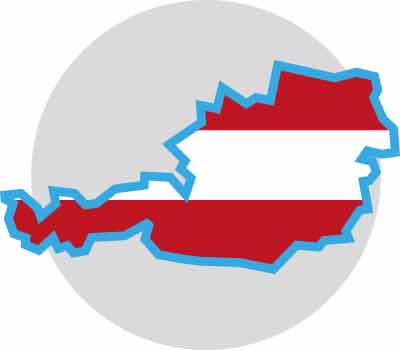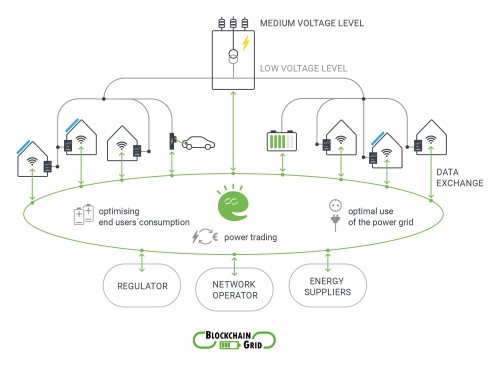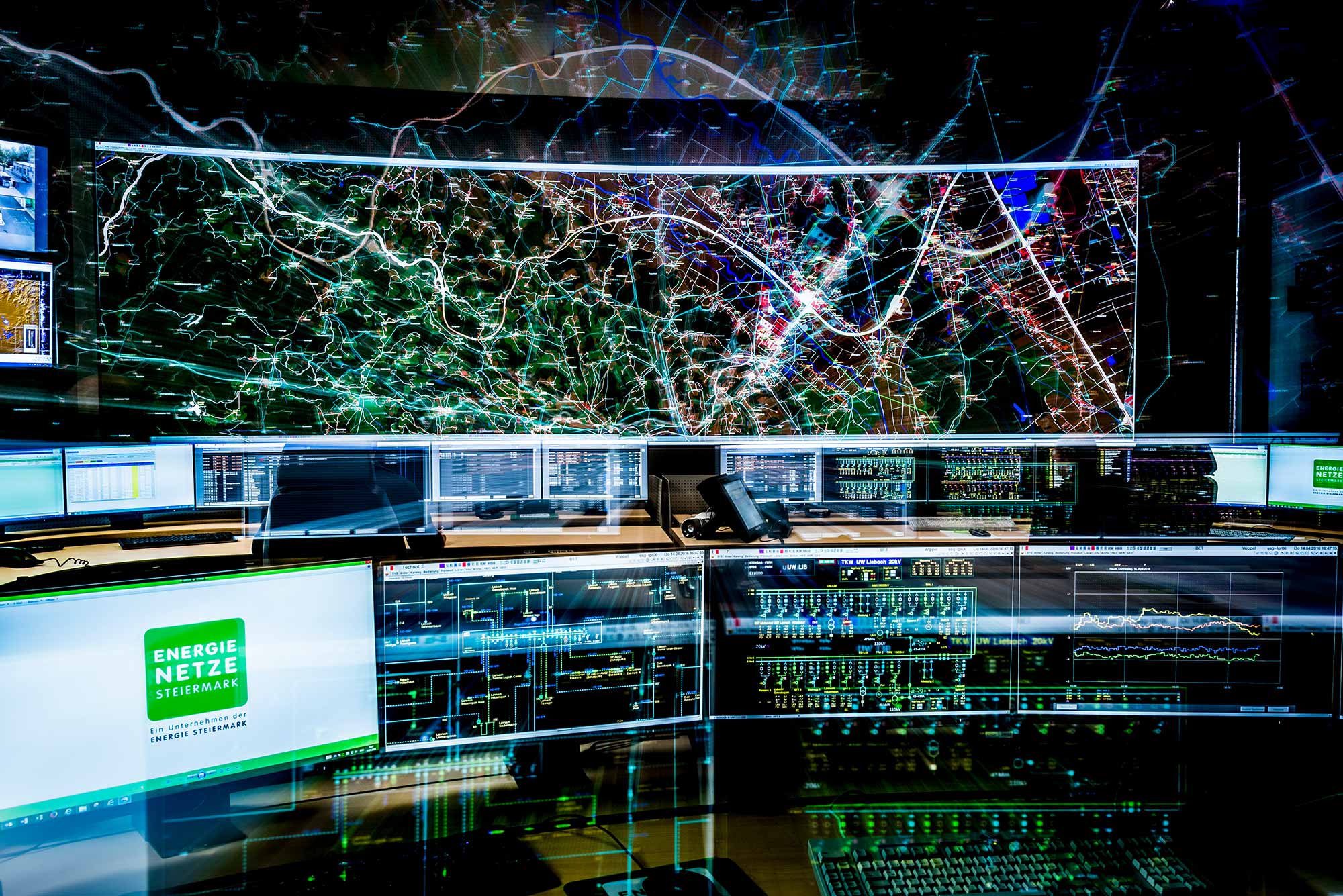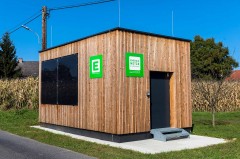
The growing number of decentralised sources feeding renewable energy into the grid, as well as new consumers such as electric vehicles, heat pumps and air conditioning systems, is increasing the load on medium- and low-voltage networks. New energy concepts are needed to enable more locally produced energy to also be consumed locally. Local energy communities are an innovative concept that was also included in the EU’s climate and energy package, “Clean energy for all Europeans” 1. They allow citizens and local authorities to participate actively in the energy system as “prosumers” (i.e. energy producers and consumers).

Test Operation in southern Styria
Since autumn 2017, the community of Heimschuh in southern Styria has been the location of a pilot project for local energy communities. As part of the research project “LEAFS”2, a central community storage system for photovoltaic power was installed. Residents can feed the solar power they produce into this storage system and then retrieve it when needed. This increases the utilisation rate of PV facilities from 30% to over 70%, and reduces household energy costs. It also relieves loading on the local power grid and creates additional capacity for connecting further renewable energy sources.

„With this project at Energienetze Steiermark, together with project partners Siemens, Energie Burgenland and the Austrian Institute of Technology (AIT), we are acting as trailblazers for the whole of Europe. We are already analysing specific strategies directly in the field, long before this is needed. In this way, we are gaining valuable knowledge and will have an immense starting advantage.“
Christian Purrer und Martin Graf
Managing Board of Energie Steiermark
Using blockchain technology
Since 2019, another field trial has been under way in the test network at Heimschuh, with around 200 passive and 13 active participants. In the Blockchain Grid project3, Energienetze Steiermark, in cooperation with Energie Burgenland, Siemens and the Austrian Institute of Technology (AIT), is developing and testing a new application that allows users to sell their surplus solar power directly to neighbours and to allocate unused network resources autonomously amongst themselves. The key to this is blockchain technology, which is being tested here in real operating conditions for the innovative management of energy, storage systems and networks. There are 13 households participating actively as prosumers: they can share their unused resources via a blockchain-based platform to provide flexibility. This project makes Heimschuh one of the first pilot “renewable energy communities” in Europe. The purpose of “energy islands” like this is to enable locally produced energy to also be stored and used locally, making it possible to become largely independent of external power sources. In addition, unused network capacity is allocated in real time to customers, allowing for instance faster charging of e-vehicles.
>> Community storage system
At times when locally produced electricity is not matched by demand, this surplus energy from households can be stored locally in a community storage system and consumed locally when required at a later point in time.
>> P2P trading
This approach allows surplus energy to be shared locally between customers, so that locally produced power can increasingly be marketed locally. Previously, any surplus power was bought by the major energy suppliers at low prices, without considering local needs.
>> Dynamic allocation of network capacity
Das This concept offers incentives for the optimal use of unused network capacities, which fluctuate over time, for producers and consumers. It allows households to allocate unused network capacities amongst themselves within a single section of the network. The network operator acts as market facilitator for the platform.
1 ec.europa.eu/energy/topics/energy-strategy/clean-energy-all-europeans_en
2 LEAFS – Integration of Loads and Electric Storage Systems into Advanced Flexibility Schemes for LV Networks, project partners: AIT Austrian Institute of Technology (project management), FRONIUS International GmbH, Siemens AG Österreich, Salzburg Netz GmbH, Netz Oberösterreich GmbH, Energienetze Steiermark GmbH, TU Wien – Energy Economics Group, Energy Institute at Johannes Kepler University Linz, MOOSMOAR Energies OG
3 PROJECT PARTNERS:
Energie Netze Steiermark (project management), Energie Burgenland, Siemens AG Österreich, AIT Austrian Institute of Technology
This project is part of the “Green Energy Lab” innovation laboratory.
www.greenenergylab.at
Share

